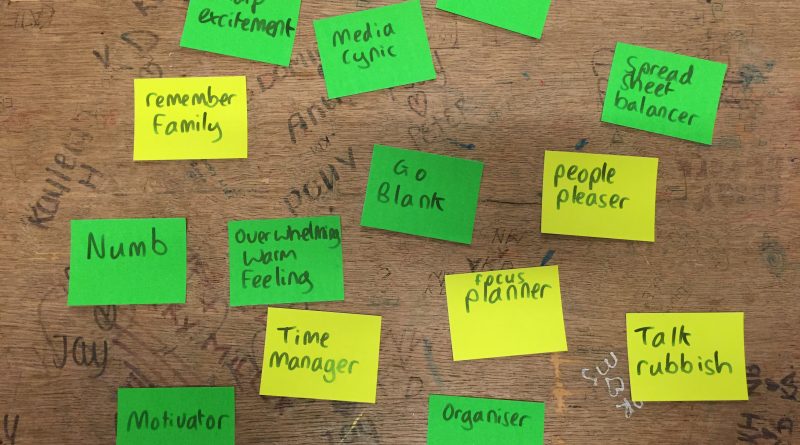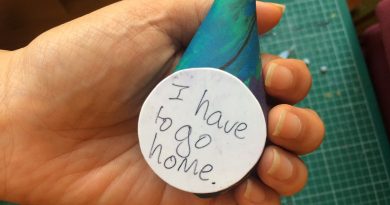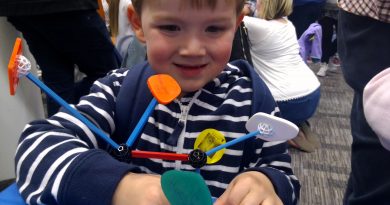How to name and sort thoughts and feelings
A first step to describing and visualising thoughts as things is to name them. This activity will explore different ways to name and categorise thoughts and feelings.
The aim of this activity is to create a set of names for thoughts that you find useful to spark design ideas for thought visualisations.
You will need Post it notes or blank cards, a pen and a table.
Naming Thoughts and Feelings
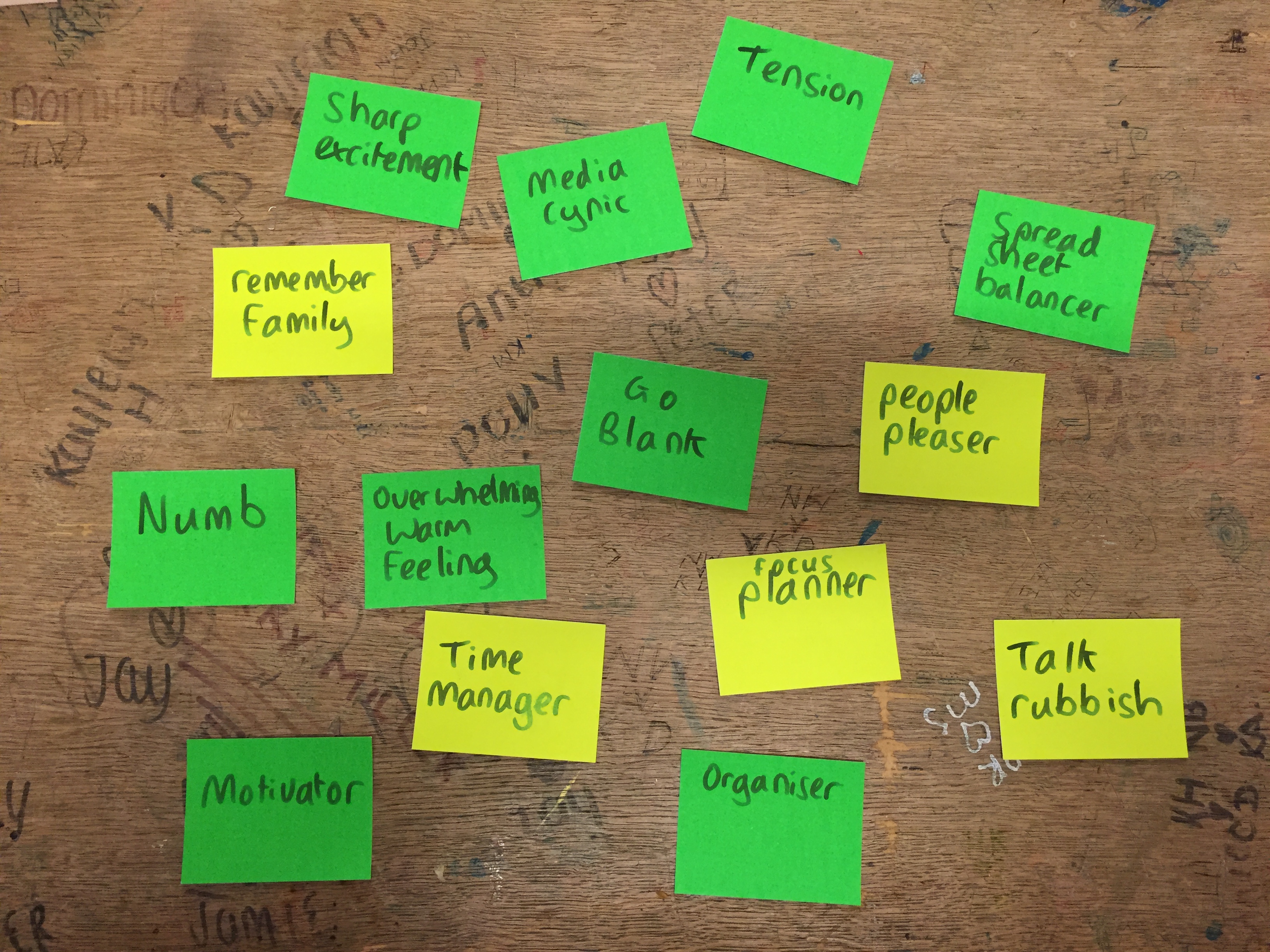
Write down as many different names for different kinds of thoughts and feelings as you can think of. Write one name for a thought or feeling per card and then scatter them on the table. Try to write at least 12, the more the better for this activity.
We each have 1000’s of thoughts every day, so it would be impossible to capture them all. Just try to create a list that is varied enough to be interesting and that has some of the ways of thinking that stand out to you. Try to list more unusual thoughts that you might have as well as those that you have all the time.
You may find it useful to write a list of names of different types of thoughts all in one go, or it might work better for you to keep a diary of your thoughts over a few days, making a short note of each thought you have and giving it a name.
When we name thoughts we can choose names that are very general that describe types of thoughts e.g. An angry memory, or names that are very detailed e.g. That ‘I knew he was going to take that last biscuit’ feeling. The aim of this activity is to create a set of names for thoughts that you find useful to spark design ideas for thought visualisations. You should try to create a good mixture of very general types of thoughts and very specific ones.
Sorting Thoughts and Feelings
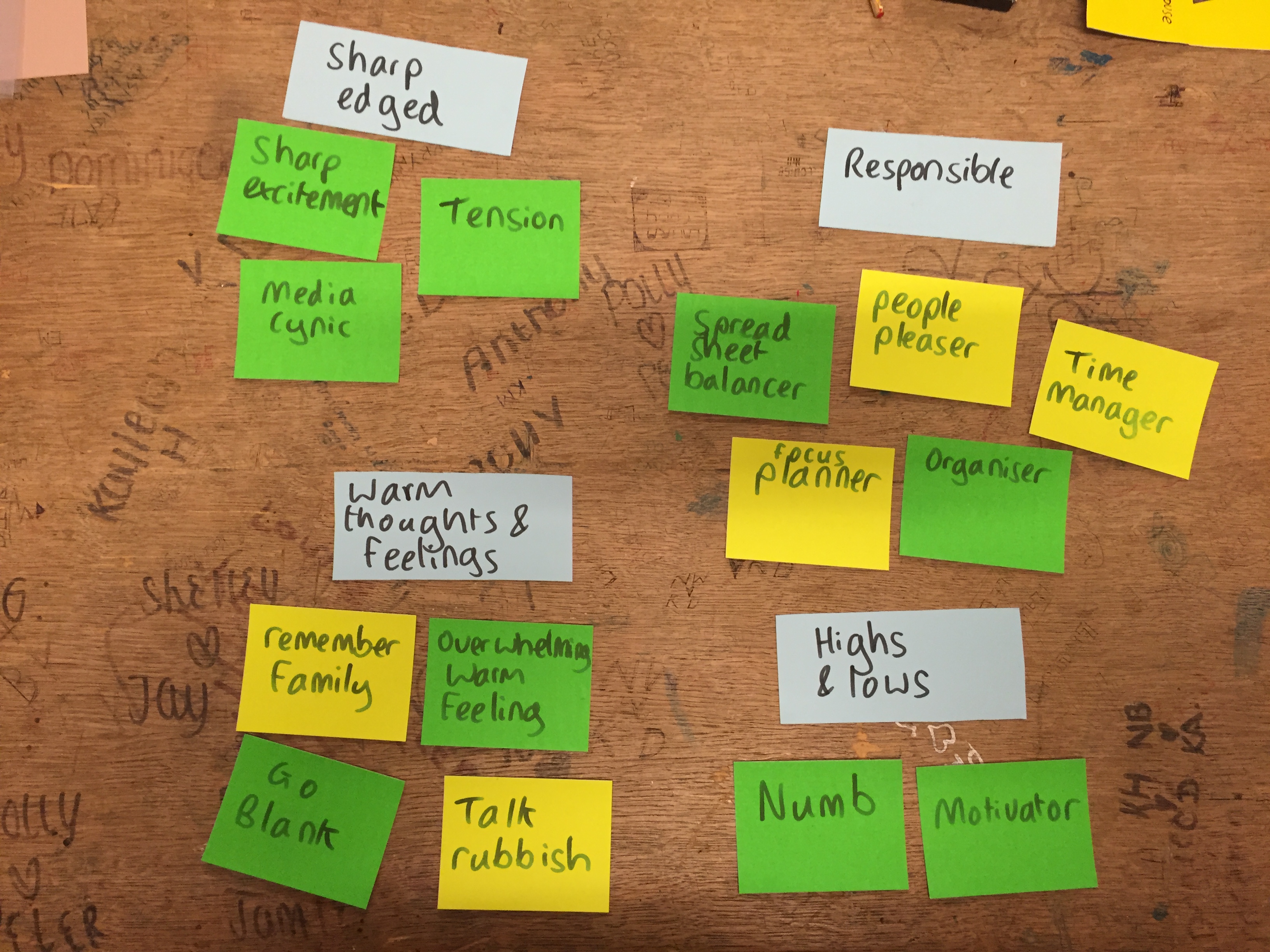
As you look at the different labels for thoughts and feelings scattered in front of you, sort them into different groups.
Think about which thoughts and feelings seem to go together and where you place them on the table.
Sort the thoughts into different groups and write the names of those groups onto post it notes too.
Explore the relationships between the different thoughts by arranging and rearranging them into lots of different groups
There is no right or wrong to naming thoughts, all that matters is that the names feel meaningful to you.
It’s probably best if you invent names for your thoughts yourself without over thinking it, but if you want some extra ideas to try or to mix together, there are some below.
Ideas for naming thoughts
Scenarios as starting points
You may find it useful to use a real time and place as a starting point and imagine the kinds of thoughts you have there. Think of a place, the people in it, something you were trying to do and the a role that you have e.g. daughter, shop assistant, party starter. Then reflect on the kinds of things you were thinking and feeling at the time.
What are thoughts like? Name thoughts using metaphors
We normally think of thoughts as being invisible and unlike things in the ‘real world’ of solid objects like tables and cars. You might find it useful to use metaphors that connect thoughts to more tangible things, e.g. a purple slippery idea or a cloudy memory or an aged rusty feeling.
What do thoughts do? Name thoughts by their jobs
People who make computer systems that think like to break down thinking into lots of different tasks. You might find it useful to think about what your thoughts and feelings do.
For example, earlier I was thinking about seeing my friends later on.
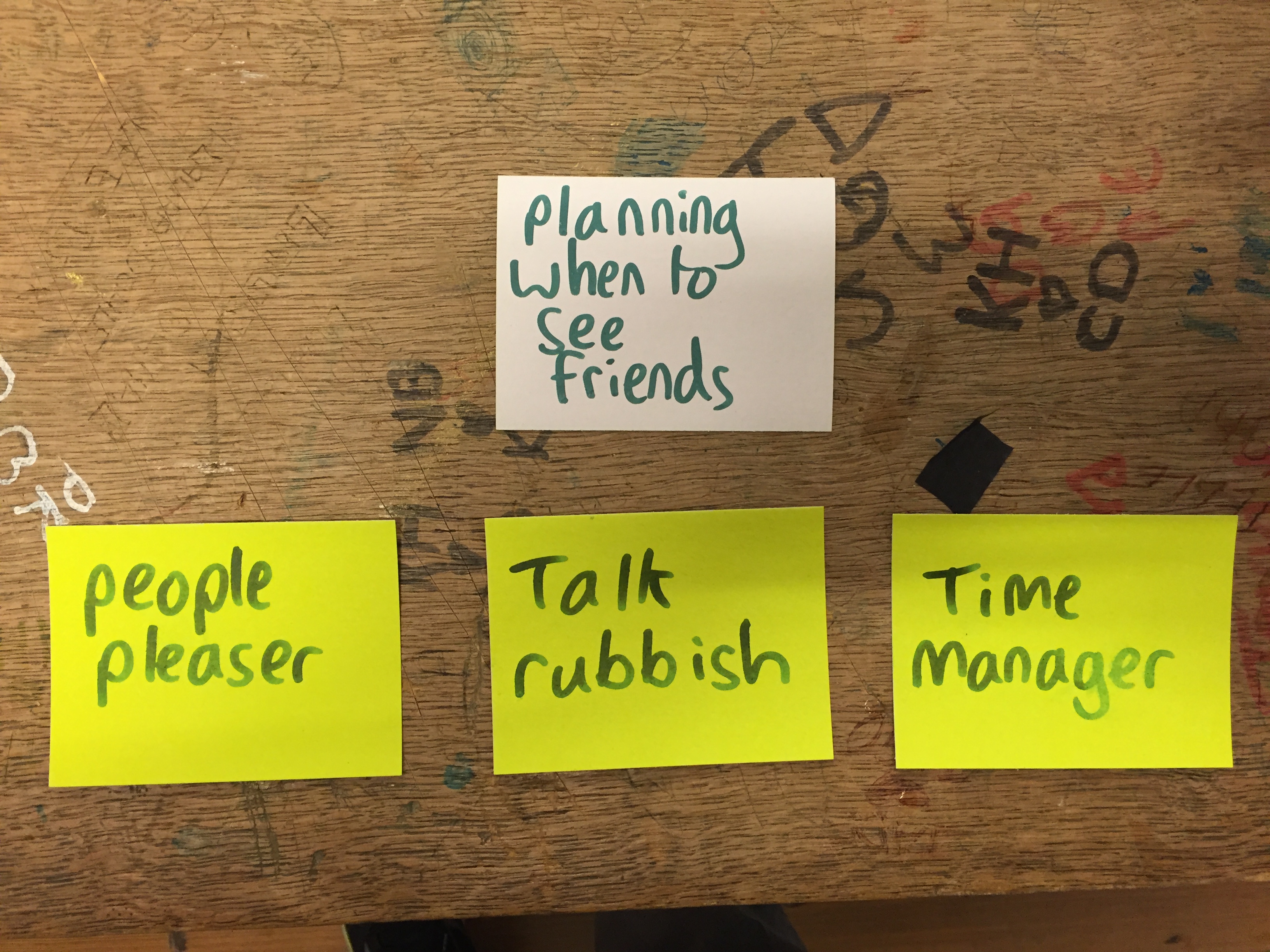
As I was making plans to see my friends I was thinking in three different ways. To try and make sense of this I wrote down these different ways of thinking and gave each one a name.
- People pleaser – Thinking about how to keep other people happy
- Rubbish talker – The part of my mind that I engage when I’m chatting about stupid things with friends
- Time manager – Thinking about how to organise my day so I get everything done in time to socialise later on
Thinking about… : Naming thoughts after their content
You might find it useful to name thoughts after the thing that they are about, e.g. a memory of primary school. The challenge to using this kind of naming is how to
Classic names for thoughts
Psychologists have agreed on sets of names for thoughts that they find useful to describe different types of thoughts, these include terms like..
- Hopes
- Beliefs
- Feelings
- Intentions
- Memories
- Desires
These terms are very general, but understood by most people. To create more personal terms, they can be used as a starting point and adapted e.g. a dishonest intention.

